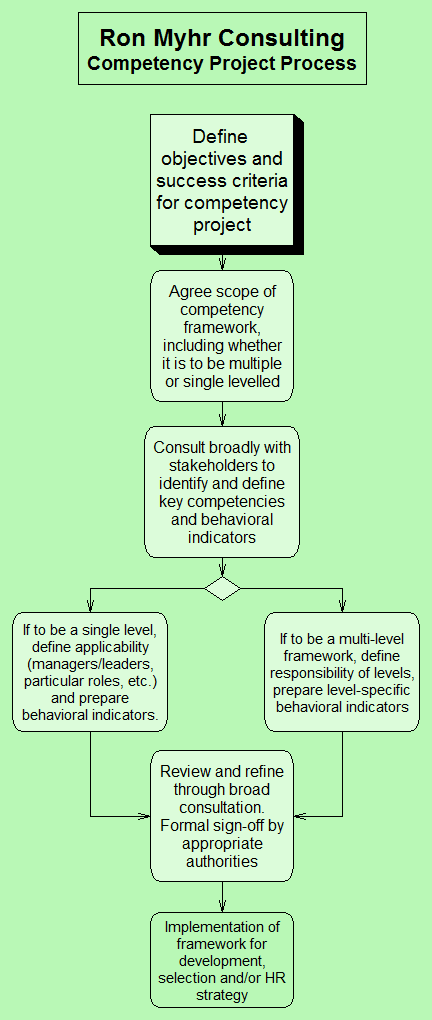 Well defined competencies are at the core of many successful organizations’ human resource strategy. They provide the foundation for identifying the kind of talent that the organization needs in order to be successful, and the kinds of strategies necessary to recruit, select and develop staff to optimum effect. Ron Myhr Consulting brings a wealth of experience to the design and implementation of competency frameworks founded in the best professional practice but reflecting actual organizational needs.
Well defined competencies are at the core of many successful organizations’ human resource strategy. They provide the foundation for identifying the kind of talent that the organization needs in order to be successful, and the kinds of strategies necessary to recruit, select and develop staff to optimum effect. Ron Myhr Consulting brings a wealth of experience to the design and implementation of competency frameworks founded in the best professional practice but reflecting actual organizational needs.
Behavioral Competencies are clusters of attributes that predict potential for success in specific work areas. They manifest as the behaviors that successful individuals display on the job. They are NOT specific skills or knowledge, but are the factors that allow the skill and knowledge to be developed to good effect.
Behavioral Indicators (BIs) are the specific behaviors that underlie successful performance of a competency. The indicators may be broadly applicable, in that they apply to all members of the target organization or unit. More commonly, behavioral indicators are organized by level — each category of behavioral indicator applies in different ways to different organizational levels, with higher levels usually (but not always) having the highest performance expectation. In most cases, the BIs are considered cumulative. Individuals at more senior levels are expected to demonstrate the behaviors at their level as well as those at lower levels.
Competency Frameworks are sets of behavioral competencies that organizations have identified as important to their success. The number of competencies within a given framework can vary considerably. Some organizations identify only a handful of core competencies, typically three to five, that are intended to apply to all staff. Others recognize that staff roles and responsibilities vary substantially across the organization, and produce frameworks with upwards of twelve competencies with the understanding that for any given position only a subset of the competencies will be identified as of key importance. Sometimes organizations combine these strategies, identifying a set of core competencies expected of all staff with additional competencies recognized as important but with variable applicability across roles.
One of the things that we know to be true is that there really isn’t any such thing as a “new” competency. Decades of research have gone into defining the behaviors underlying performance, and organizing these into competencies and competency frameworks. Many consultancies have developed generic competency frameworks, and specialist organizations have done so for their own domains. A good example of the former is the Universal Competency Framework, from SHL. The Society for Human Resource Management is an example of the latter, with a well-defined framework intended to address the competency requirements for HR professionals.
The challenge is to identify the competencies of particular relevance to an organization, and then to express those competencies clearly, succinctly and in ways that address the specific local circumstances. Of course, the next step is to use the competencies effectively, for staff development planning, for recruitment and selection, and for identification of organizational strengths and weaknesses and the development of strategies to address these.
